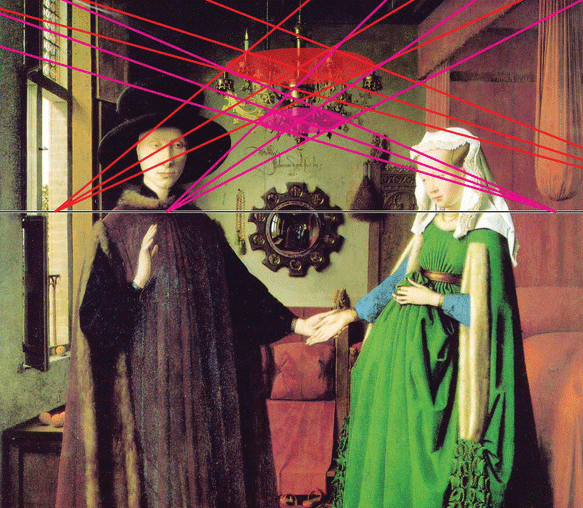Where Art and Science Collide: Optics in Paintings

Professor Charles M. Falco spoke to Colgate students about the intersections of Art and Physics on Tuesday, February 26.
When you imagine a scientist, the first image that comes to mind is probably a person in a white lab coat with goggles and gloves, hunched over a microscope. When you imagine an artist, you probably think more about “hipster” in torn jeans and tortoiseshell glasses, perhaps holding a paint palette. When you imagine these two figures, you probably wouldn’t imagine them collaborating. The Physics and Astronomy Department recently brought Professor Charles M. Falco to show where art and science collide.
Falco traveled to Colgate from the University of Arizona to give a lecture on optics (the scientific study of sight and the behavior of light) and argue that artists in the fifteenth century used lenses as a painting aid. Falco gave his lecture on February 26 at 11:30 a.m. in Ho 101 and presented a thesis he worked on with famous painter David Hockney. Hockney has been called “the greatest living artist”—he’s the real deal. His collaboration with Falco began when Falco saw an article authored by Hockney in the New Yorker regarding illusionary techniques in painting.
The thesis shows that painters used different optical aids to make their paintings more realistic and illusionary. However, due to trouble focusing the lenses, images would often come out a bit distorted. Falco showed two famous paintings in which lenses were used to give the painting depth or to create optical illusions. The paintings were “Husband and Wife” by Lorenzo Lotto (1423) and “The Ambassadors” by Hans Holbein the Younger (1533).
Because of the interdisciplinary nature of this lecture, students and faculty in multiple different departments were interested in the subject. First-year Jenny Steele spoke to how this factor motivated her to attend the lecture.
“I’m a physics student, but I was really interested in this [lecture] because it was about the intersection between art and science,” Steele said.
Falco was brought to Colgate by the leaders and co-founders of the Optical Society of America chapter at Colgate University, seniors Brianna Holmes and Faith Williams.
“We started the club because a physics club already exists but optics is a branch of physics, and we were both interested in optics. We saw few opportunities on campus to pursue and learn more about optics so we decided to found the Optical Society of America chapter in order to bring the love and knowledge of optics to Colgate and let students learn about the area of study,” Holmes said.
This lecture was a great opportunity to show students that just because they study a specific subject in college, that does not mean their career cannot span multiple disciplines, and that even subjects that are as different as art and science can come together in surprising ways. If you would like to learn more about optics or the Hockney-Falco thesis, visit Professor Falco’s website: artoptics.com.
Contact Abby Blair at [email protected].






